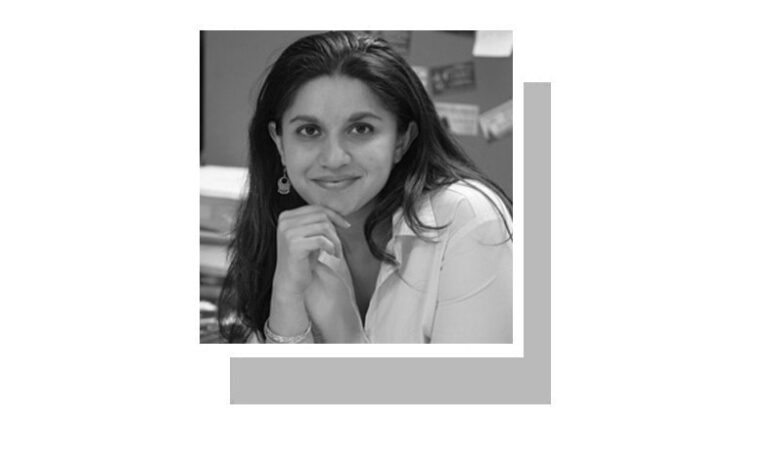The new kingdom

AS the second half of the holy month of Ramazan begins, so too do the last days of the Islamic Arts Biennale being held in the Kingdom of Saudi Arabia. The biennale is the second major art event being held in the kingdom in two years. Last year, the kingdom hosted the Diriyah Contemporary Art Biennale in Jeddah.
The Islamic Arts Biennale is also being hosted in Jeddah. Many of those travelling to Jeddah this year have been able to see the 280 objects gathered from all around the Muslim world at the Western Haj Terminal. The latter was intentionally selected as the venue for this exhibition keeping in mind the fact that many pilgrims begin their journey at the terminal.
Saudi Arabia has been undergoing a remarkable transformation over the past few years. Since 2018, a host of changes have been enacted in the kingdom. As one women artist from Saudi Arabia told me, it is an era she never thought she would see in her lifetime.
In earlier years, women who travelled to Saudi Arabia were warned against the vigilant mutawa or religious police that circulated all around, chastising and imposing fines on women who in their view were not properly covering their hair. Now it has been some years since the mutawa have had any prerogative at all. Many female visitors to the kingdom choose not to wear the veil at all.
It is also not a rare sight to see Saudi women wearing the abaya with the front of the garment open thus showing their regular clothes. Many among the youth that is coming of age in Saudi Arabia right now are amused by the stories told by those slightly older than themselves about being chased and hit with sticks if their head was not properly covered or if their clothes were showing through their abaya.
One can only imagine what the mutawa of old would have thought of the movies and concerts that take place in the kingdom today. Surely, not a single member of the religious police could even have imagined that a Justin Bieber concert would ever take place in the kingdom with teens listening to the rhythm of Western music.
The investment in art and music is particularly notable not only because it could never have been predicted a decade or even a half decade ago but also because it comes at a time when economic woes faced by the rest of the world have decreased the amount Western countries (the usual sponsors of expensive biennales) are able to spend.
Saudi Arabia has been undergoing a remarkable transformation over the past few years.
The Islamic Art Biennale includes artifacts such as a 150-year-old silken cover for the Kaaba. As the curator of the biennale described it, the intent of the exhibition is to give contemporary objects a lineage in the larger story of Islamic history and heritage.
Historical objects like ancient copies of the Holy Quran in turn serve to spotlight the practice of pilgrims coming from all over the world today to perform Haj as part of the long history of the pilgrimage since the time of the Holy Prophet (PBUH).
One of the most significant changes that the kingdom has made in the annual pilgrimage is to ease the requirement that female pilgrims must be accompanied by a male guardian.
In the past, this requirement meant that most female pilgrims — there was some relaxation for those belonging to certain schools of thought — could not register themselves as prospective pilgrims unless a male family member was listed on the form. If a woman was widowed or unmarried and did not have a son or a father or a brother who was able to take her to Makkah, she was not able to perform the pilgrimage.
While some countries may still not permit female pilgrims to travel on their own, others are now beginning to allow unaccompanied female pilgrims to journey to the kingdom.
Last week, the minister of minority affairs in India announced that over 4,000 female women had applied to perform Haj this year. Among them were those who lost their husband or son during the Covid-19 pandemic, leaving them without a male family member to accompany them to Saudi Arabia and to the holy cities of Makkah and Madinah.
For decades and decades, it used to feel that change would never come to Saudi Arabia. Even though the kingdom welcomed expatriate workers, including many Westerners, to facilitate its oil boom in the 1970s and 1980s, it remained an austere and extremely conservative place, especially for women. The accounts of expatriates who worked in the compounds of oil companies were discouraging.
These expats described a desert where there were few signs of public life let alone art exhibitions and concerts. While the technological prowess of the kingdom’s hospitals and high-rises and educational institutions had been growing, thanks especially to migrant labour, the extent and rapidity of the changes that have taken place over the past five years have been nothing short of astounding.
Those who travel to Saudi Arabia will now will find themselves offered art and history curated from all around the world. They will witness malls where men and women can shop freely with hardly any sign of the chastising morality police, and public life unfolding in the kingdom’s many cafes and restaurants.
The fact that the changes have also extended to the pilgrimage (in which millions participate) to facilitate the people, is testament to the fact that sometimes change is not incremental but quite swift.
It would be safe to surmise that the old Saudi Arabia is in the process of a transformation. All signs now appear to point to a more tolerant and hopeful future rather than an ultraconservative mindset.
The writer is an attorney teaching constitutional law and political philosophy.